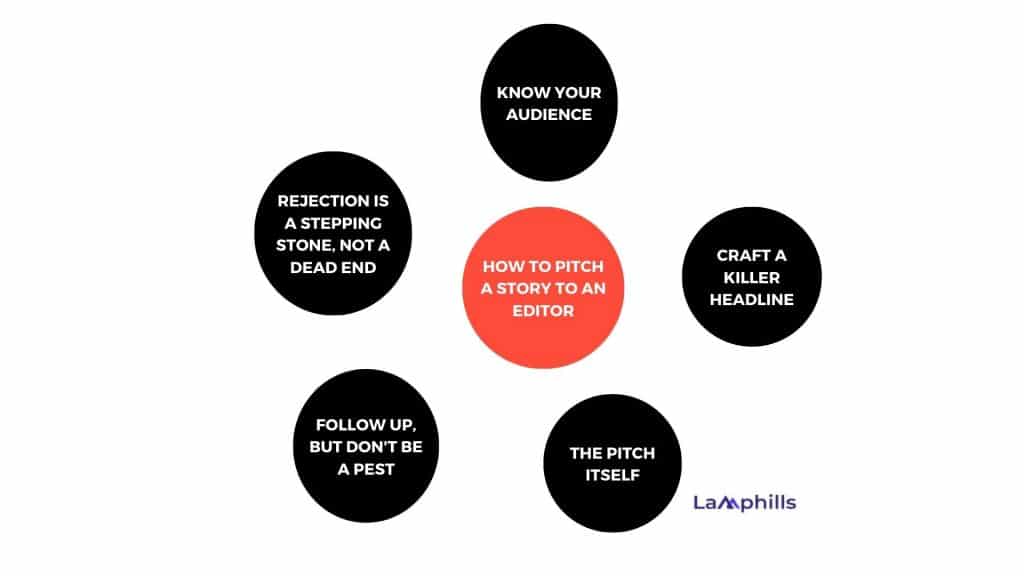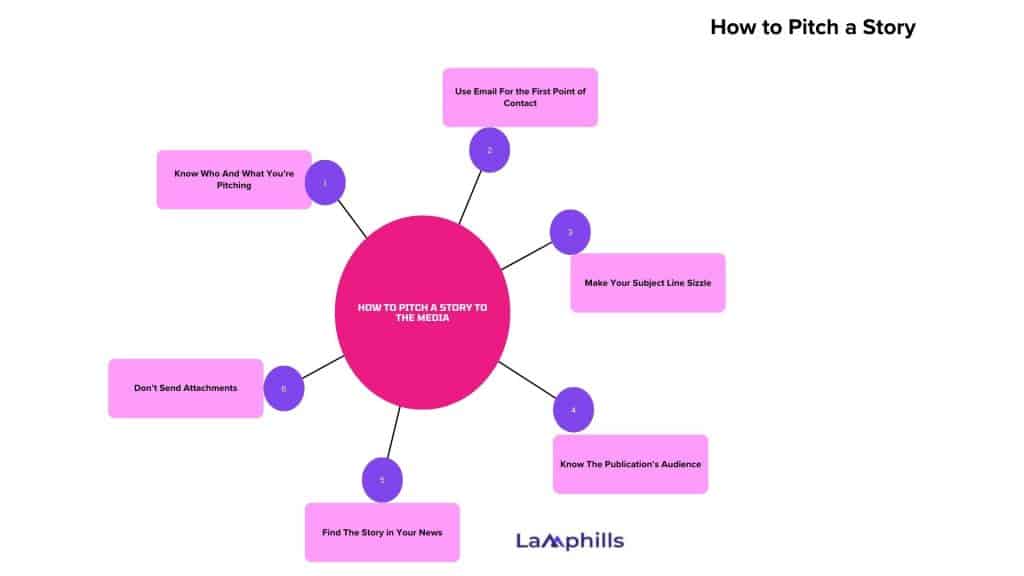Pitching a story like a pro to an editor, media, and magazines is an art form that can make or break a writer’s career. It’s crucial when you pitch your story to editors, magazines, or the media, hoping to capture their interest and secure a publishing opportunity. Mastering pitching involves a combination of strategy, emotion, and knowledge.
The thought of pitching a story to an editor, a magazine, or even the general media might be terrifying. It’s like throwing your creative baby out into the world and hoping it lands tenderly in the arms of someone who understands it. But fret no more!
I’ve been there, amid freelance writing, gathering rejections alongside the excitement of published work. I’ve learned a lot via trial and error (mainly error!), I’ve learned a thing or two about crafting pitches that stand out. So, buckle up, because I’m here to spill the writer’s tea on how to pitch a story like a pro to an editor, media, and magazines.
Key Takeaway
Here are 4 key takeaways:
- Tailor your pitch to your audience: Research the publication or media outlet you’re targeting to understand their content and audience. Craft your pitch to highlight why your story is relevant and interesting to their specific readers.
- Draft a compelling pitch: Write a concise and engaging pitch (around 150-250 words) that includes a strong hook, the key points of your story, your qualifications, and a call to action. Use a captivating subject line to grab the editor or journalist’s attention and make them want to read more.
- Persistence is key, but be professional: Follow up on your pitch after a week if you haven’t heard back, but avoid pestering the editor or journalist. Be patient and understand that rejections are a normal part of the process. Learn from the feedback (if provided) and improve your pitch accordingly.
- Different approaches for editors and media contacts: When pitching to editors, focus on highlighting the story’s relevance to their publication’s audience. When pitching to media contacts (journalists or bloggers), tailor your pitch to their specific interests and writing style. Additionally, focus on finding a newsworthy angle for your story.
What is a Story Pitch?
A story pitch is a concise description, usually not more than 500 words or two paragraphs, that aims to persuade an editor, media, or publisher to commission the piece. Writers in various professions use pitch letters to persuade an organization to publish their work.
For example, a journalist may email the editor of a newspaper or magazine to explain an article’s idea. The editor checks whether the article idea is appropriate for their magazine and whether the journalist is qualified to produce the piece. Similarly, a scriptwriter may pitch a screenplay to a movie producer by explaining the plot and characters.
Why is it Important to Know How to Pitch a Story?
Professional writers benefit from learning how to pitch a story since it helps them get their work published and create professional relationships with publishers, editors, and media. Understanding the basis and expectations of pitching a story may boost your confidence when approaching publishers. It may help you become more successful in having your ideas approved.
It’s also important to understand the various approaches to pitch a story. It is usual for freelance journalists to send story pitches to editors via email. Authors or scriptwriters may pitch their work in person at writers’ conferences or when meeting with network producers or directors. Publishers and agencies frequently request authors to submit a query letter before reading an excerpt or the entire article.
How to Pitch a Story to an Editor

Here are the steps to pitching your story:
#1. Know Your Audience
Imagine pitching a story about the history of buttons to an extreme sports magazine. It’s not exactly a match made in headline heaven, right? Understanding your audience is essential for delivering an excellent pitch. Spend some time researching the publication you want to target. What types of content do they normally publish? Who are their readers?
For example, during the pandemic, I proposed a lighthearted piece to a health and fitness magazine on the growing interest in sourdough baking. That’s a big mistake. While the magazine covered health, it primarily focused on high-intensity workouts and fad diets. My sourdough story, while appealing, wouldn’t have resonated with their audience. Lesson learned: conduct extensive research.
#2. Craft a Killer Headline (That Won’t Make You Cringe Later)
The headline is your initial impression. The hook captures the editor’s attention and persuades them to read on. Avoid using generic headlines like “The Importance of X.” Instead, strive for something straightforward, simple, and engaging. Consider it a movie trailer for your story; it should entice the editor to see the entire feature.
Remember the sourdough pitch disaster? Well, I completely rewrote the story, focusing on the unanticipated health benefits of this pandemic pastime. What’s the new headline? “Sourdough Surprise: How This Fermented Bread Became a Gut-Healing Powerhouse.” Much better, right?
#3. The Pitch Itself (Without the Opera Length)
Here’s where your storytelling muscles come into play. The pitch should be concise (usually around 150-250 words) and highlight the key elements of your story:
- The Hook: Briefly introduce your story idea and explain why it’s relevant and interesting to the publication’s audience.
- The Meat: Briefly outline the main points of your story. What are the key takeaways?
- Your Expertise: Briefly showcase your qualifications for writing this piece. Have you written similar pieces before? Do you have access to exclusive sources?
- The Call to Action: End your pitch by politely asking the editor for the opportunity to write the piece.
Pro Tip: Editors are very busy. Make your pitch scannable using bullet points, and brief paragraphs, and minimizing unnecessary words.
A few months ago, I pitched a story to a travel magazine about the hidden treasures of a little seaside village I had recently visited. My pitch described the town’s distinct charm, and off-the-beaten-path appeal, and even mentioned a quirky local festival I’d encountered. I highlighted my travel writing experience and passion for discovering hidden destinations. Fortunately, the editor loved it, and the article will be published next month!
#4. Follow Up, But Don’t Be a Pest (There’s a Fine Line Here)
If you haven’t heard back from an editor within a week, it’s acceptable to contact them again. A polite email inquiring about the status of your pitch is entirely acceptable. However, avoid sending them everyday emails. Patience is crucial!
I have waited weeks (yes, weeks!) to hear back from an editor. My anxiety would surge, but I eventually learned to trust the process. In one case, an editor eventually responded to my follow-up email, stating that they had been swamped but loved my pitch for a story on sustainable fashion. The wait was worthwhile!
#5. Rejection is a Stepping Stone, Not a Dead End
Rejection is a fact of life for any writer who pitches stories. It doesn’t mean your proposal is bad; it simply may not be the best fit for that particular publication at that time. Don’t become discouraged. Learn from the feedback (if any) and improve your pitch accordingly.
I once pitched a story on the psychology of procrastination to a productivity magazine. The editor respectfully rejected it, saying they were focusing on more practical time management tips. While I was unhappy, I took their feedback to improve the story before pitching it to a psychological magazine, where it found a happy home.
Download Lamphill Template
How to Pitch a Story to the Media

With so many social media tools, news feeds, aggregate sites, and deadlines vying for a journalist’s attention, it can be difficult to determine what makes a successful pitch. PR professionals need to stand out from the sea of distractions to get their message read by a journalist or blogger. Unfortunately, getting your message to an influencer is only half the struggle. Convincing a media contact to really write about a firm is much more difficult.
So, how can you stand out in a journalist’s already crowded inbox without using tricks or gimmicks? And, even if a journalist likes your pitch, how will you get the story covered? Let’s have a look at some strategies that have been shown to work from the PR perspective, but that are also supported by journalists, bloggers, and media influencers.
#1. Know Who And What You’re Pitching
Before sending a pitch story, you should understand what themes the media does and does not cover. It will require some researching and digging through previous articles, but it can be worthwhile. Pitching a story to the media that a journalist or a magazine does not cover, or that she has previously written on, will waste your time and put you in a negative light because you clearly couldn’t be bothered to make the effort.
Just because a general topic has already been covered by a reporter does not imply you shouldn’t pitch it. If you can come up with a distinct viewpoint, you could build on the previous article. Refer to it in your pitch and explain why your tale will take a different approach to the subject.
#2. Use Email For the First Point of Contact
Sure, a phone call is direct, and social media’s popularity and reach are great, but 92 percent of journalists prefer to receive PR pitches via email. The nature of email allows journalists to open yours whenever they have time to read it. A phone call, on the other hand, can be jarring and disrupt their productivity. The last thing you want to do is irritate a media who is in the middle of drafting a piece.
Always do your homework to identify the email address of the exact journalist you’re attempting to pitch, rather than sending pitches to the black hole listed on a publication’s website. If you want to pitch the Technology section, find out who writes for it and get his email address. It may be included on the About Us part or another page dedicated to journalist profiles, but be aware that some sites purposefully do not publish contact information.
#3. Make Your Subject Line Sizzle
If you can’t summarise what your email is about in the subject line, your pitch has a slim probability of being read. Getting the journalist’s attention in that subject line is crucial, as it is what determines whether or not they open your email. If it’s boring or doesn’t make sense, they’ll probably delete it.
There are several ways to pique curiosity in the subject line. You can include just enough information to get readers to open your email (“What does a chimpanzee have to do with brewing beer?”), or you can include a news teaser (“Get the exclusive story of the merger between X and Y”). You can also use statistics you’ve gathered (“79 percent of business owners are failing to do this one thing”).
#4. Know The Publication’s Audience
The best public relations professionals understand which journalists to target, but they can also explain why the pitch meets the needs, demographics, or interests of their readership. I can’t emphasize enough how important it is to ensure that your pitch is relevant. Even though every public relation professional should know this, still 80 percent of influencers get irrelevant pitches from brands.
Who is the audience? What stories resonate with them? Which are they sharing on social media or commenting on?
Remember, you’re pitching this media influencer on your story. That means you must be able to explain why the topic is significant to their audience and why they should care. If you know what sells to that audience, you’ll have a simpler job getting the media to buy it.
#5. Find The Story in Your News
Every public relations professional has faced a client who pushes a press release that isn’t very exciting or newsworthy. You must make it noteworthy in a natural way. What’s the key to success? Storytelling.
When you can convert your client’s boring news into a captivating story, journalists pay attention. Read additional human interest stories and keep track of what appeals to you. Put a human element into your brand’s story, and your audience will be able to relate.
And if it’s impossible, be honest with your client or employer. Not everything should be made into a press release. It may be best to write it as a post for the corporate blog rather than wasting a journalist’s time.
Download Lamphill Template
#6. Don’t Send Attachments
This should be a no-brainer, but some public relations professionals continue to send email attachments. Resist the urge to provide that high-resolution image or explanatory PDF until the journalist shows an interest in the topic and seeks particular attachments or details.
Alternatively, you can provide a cloud-based link to images and press kits in the email so that the journalist can access them. However, sending attachments is a definite way to land up in the spam bin.
How do you start writing a pitch?
Here are some tips to start writing your pitch :
- Read the submission guidelines
- Introduce your idea and establish your angle
- Explain your methodology
- Estimate a deadline for a preliminary final version
- Be prepared to take questions
How do you pitch a story about yourself?
Here’s a step-by-step guide to help you create an impactful elevator pitch:
- Set your goal. Clarify the goal of your pitch.
- Start with a hook.
- Introduce yourself.
- Present your solution or value proposition.
- Know your audience.
- Add a story or example.
- Practice and refine.
- Be confident — keep it conversational.
What is a pitch example?
“Hi [their name].
It’s [your name] from [your company]. Last time we spoke, you mentioned [problem that the prospect experienced]. I’ve given it some thought and I think I know how I might be able to help you [insert the benefit of your product, as it relates to their problem].”
From there, you can move the conversation forward. Or in the case of an email or voicemail, mention that you’ll follow up again and suggest a time to chat.
How do you start a pitch intro?
You can start a pitch introduction by introducing yourself, including your name, smiling, extending your hand for a handshake, and saying something like “It’s nice to meet you!”
Conclusion
Remember, pitching isn’t just about landing a single story. It’s about building relationships with editors. If they enjoy working with you, they’re more likely to consider your future pitches. Be professional, courteous, and open to feedback.
So, there you have it, my fellow wordsmiths! With a little research, a killer pitch, and a dash of perseverance, you too can land your dream story placement. Now, get out there and pitch with confidence!
What are your best tips for crafting a winning pitch? Share your experiences and thoughts in the comments below!
Related Articles
- Video Storytelling: Its Benefits to Your Brand
- How To Write a Human Interest Story: Detailed Guide
- BROADCAST MEDIA: Meaning, Types and Examples
- Top 10 Journalists in the World: Our Reserached List 2024 (Updated)






